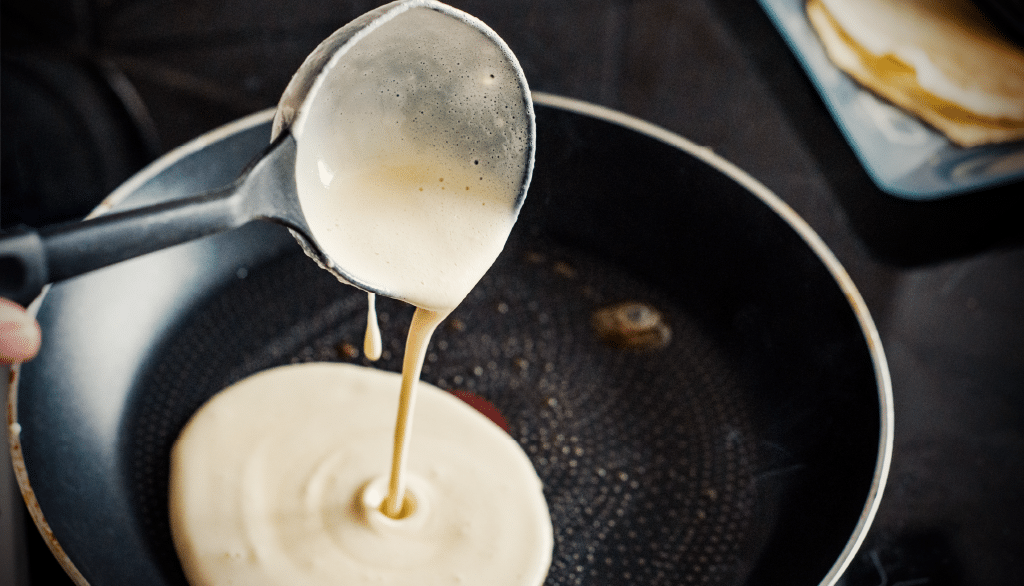Chemistry & cooking series: Why pancakes bubble

In this six-part blog series, I’ll share interesting and practical cooking insights that I learned from HarvardX’s Science & Cooking: From Haute Cuisine to Soft Matter Science (chemistry). I’m a scientist who loves cooking, and working from home and having lots of free time, has allowed me to bring my two passions together. Bon appetit!
Have you ever mistaken baking powder for baking soda? I did and the results were not what I expected. Instead of baking a nice and fluffy cake, I got a compact and not-so-appealing, rubbery dough. This blog will discuss the difference between baking powder and baking soda, using a food we all love as an example: pancakes!
Why pancakes bubble while cooking
A classic recipe for pancakes calls for a mixture of eggs, flour, buttermilk, and baking soda. The mix is poured into a pan and cooked on both sides. You may recognize that while the mix is being cooked, it bubbles and leavens. What causes that?
During cooking, the proteins from the eggs, flour, and milk are destabilized, denatured, and coagulate at different temperatures, producing a net that makes the pancakes elastic. At the same time, the lactic acid from the buttermilk reacts with the baking soda (sodium bicarbonate), a basic salt, with the heat of the pan accelerating the reaction. The final product of the reaction between buttermilk and baking soda will be water, salts, and a gas, carbon dioxide. This carbon dioxide together with steam will try to escape from the net of proteins from the mix, producing bubbles that make the pancakes rise and the final product fluffy. Interesting, huh?
So, how are baking soda and baking powder different?
In the pancake recipe, the baking soda, or sodium bicarbonate, needed the acid from the buttermilk to react. On the other hand, you may see recipes that call for baking soda and baking powder or just baking powder. So what’s the difference?
Well, it’s chemistry! Baking powder is a mix of baking soda and an acid (cream of tartar), so it just needs a liquid to be activated. You may have recipes that call for a mix of baking soda and baking powder. In those cases, the baking soda may not get enough acid from the liquids to react, so it needs some help from the acid in the baking powder.
Surprisingly, there are many ingredients in cooking that have acidic properties — chocolate, molasses, sour cream, lemon juice, and coffee — so you’ll need only baking soda to produce fluffy and delicious bakings. Enjoy!
